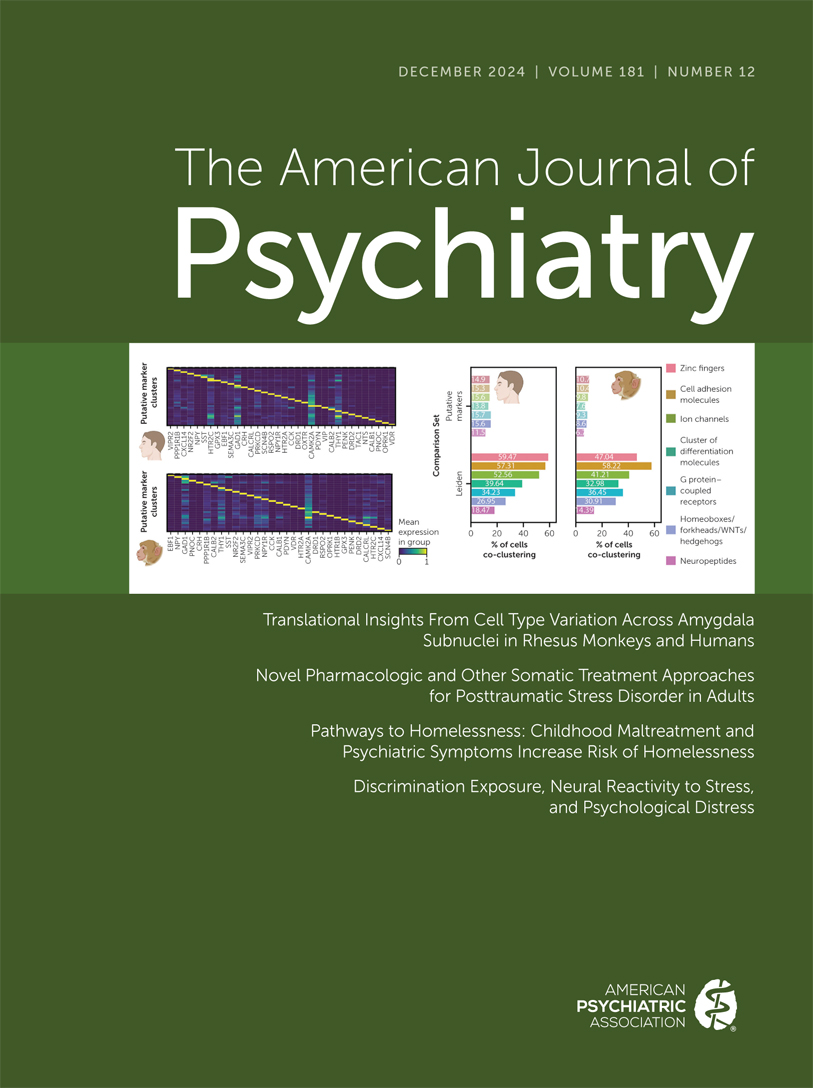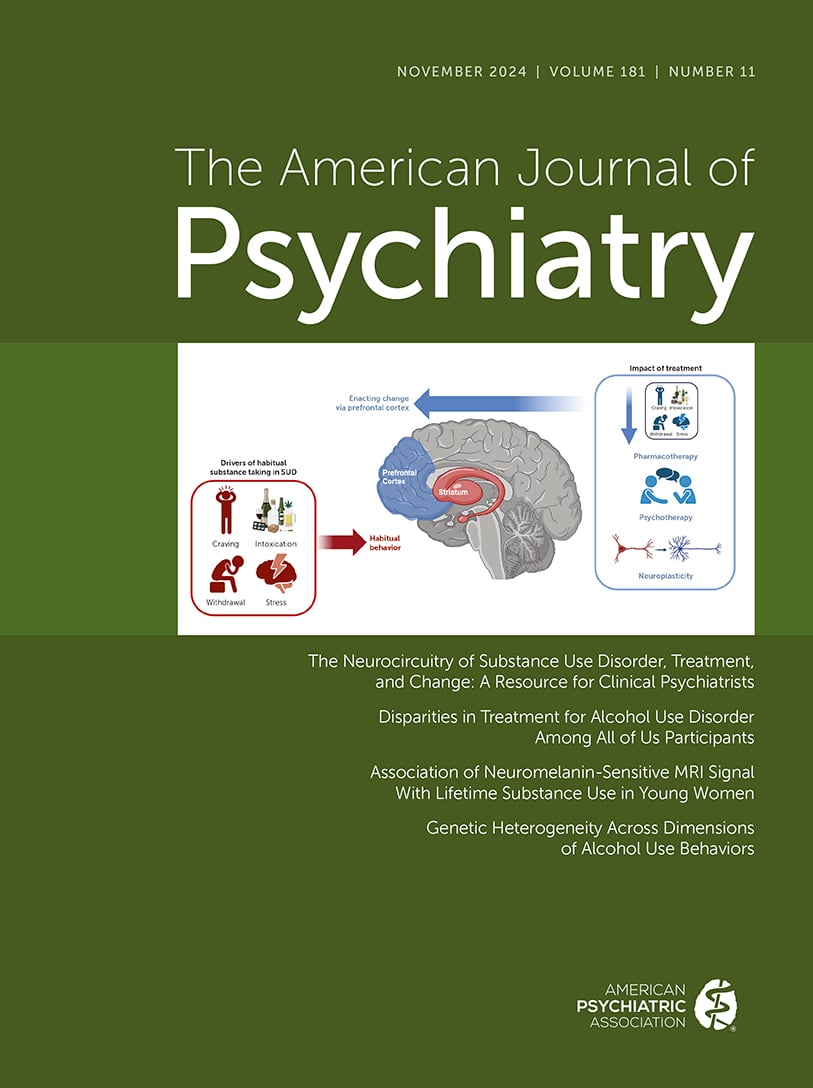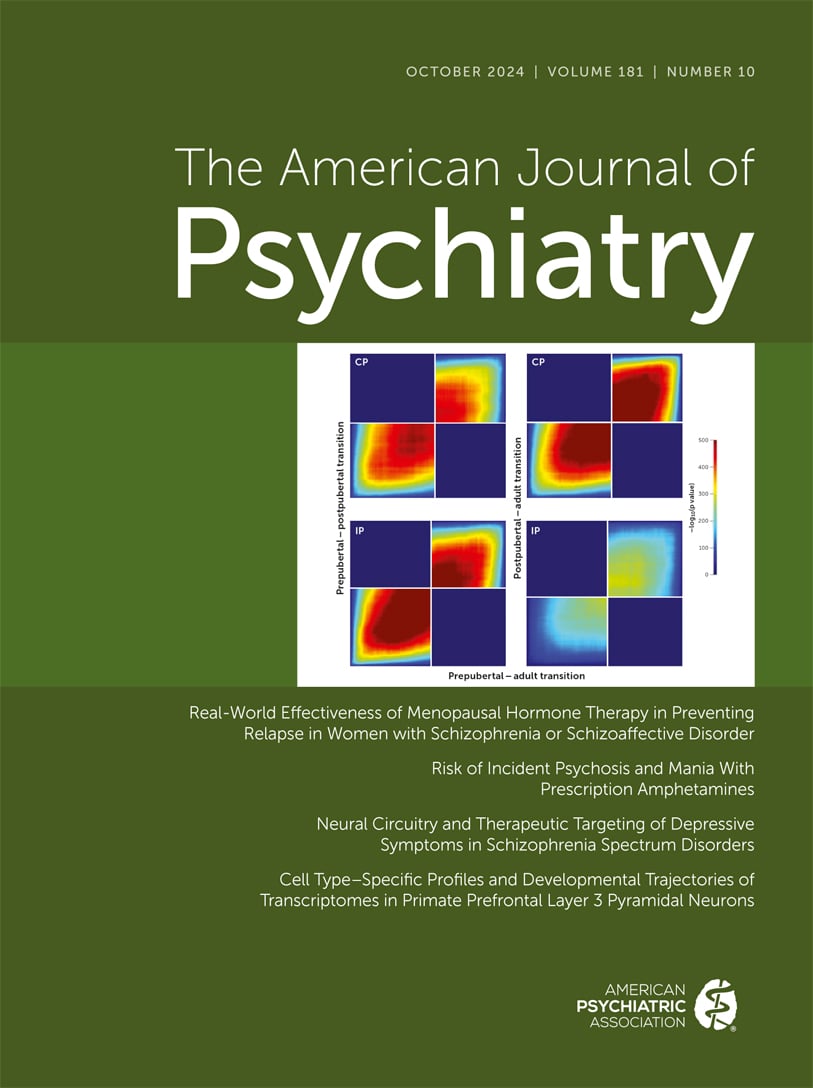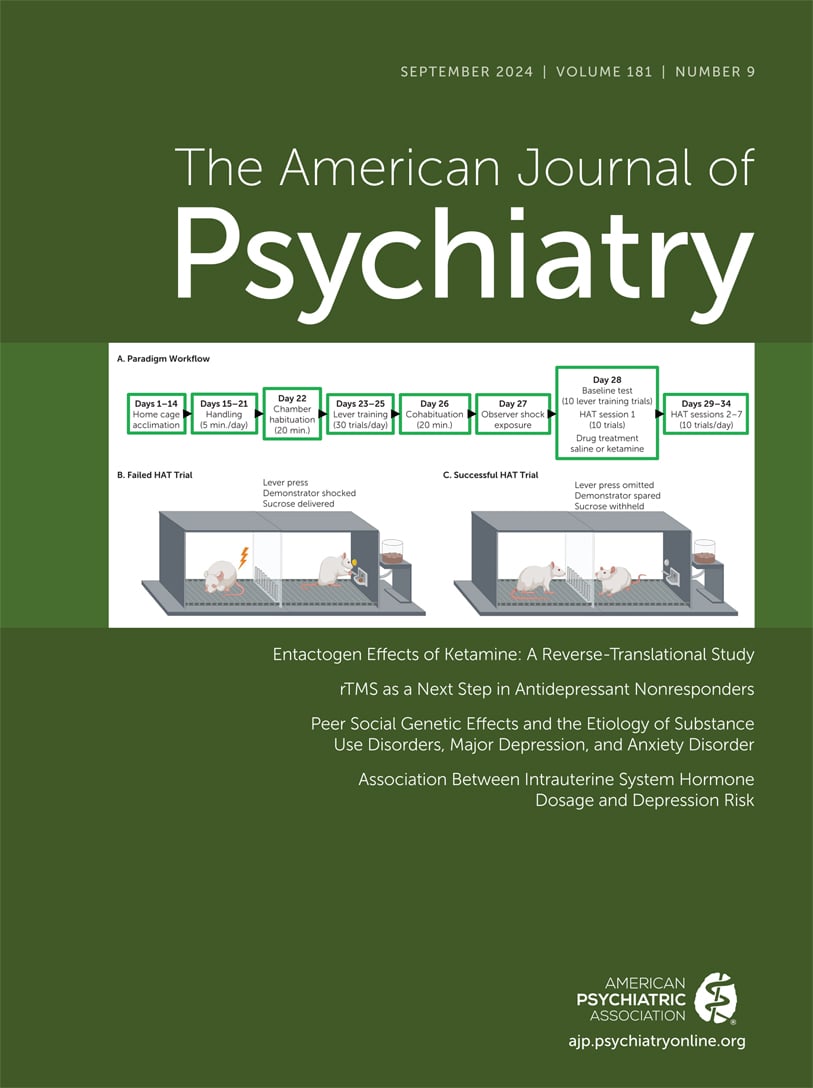American Journal of Psychiatry
- Volume 167
- Number 1
- January 2010
In This Issue
Editorial
Commentary
Clinical Case Conference
Publication date: 01 January 2010
Pages17–23Abstract Illicit methamphetamine abuse represents a major problem in many countries worldwide, including the United States. Prolonged regular smoking or injection of methamphetamine can cause a psychosis, typically characterized by paranoid delusions and ...
https://doi.org/10.1176/appi.ajp.2009.08111695Review and Overview
Publication date: 01 January 2010
Pages24–39Abstract Borderline personality disorder is characterized by affective instability, impulsivity, identity diffusion, and interpersonal dysfunction. Perceived rejection and loss often serve as triggers to impulsive, suicidal, and self-injurious behavior, ...
https://doi.org/10.1176/appi.ajp.2009.09050744Article
Publication date: 01 January 2010
Pages40–46Objective Evidence suggests that chronic high levels of behavioral inhibition are a precursor of social anxiety disorder. The authors sought to identify early risk factors for, and developmental pathways to, chronic high inhibition among school-age ...
https://doi.org/10.1176/appi.ajp.2009.07010051Publication date: 01 January 2010
Pages47–55Objective Classical conditioning features prominently in many etiological accounts of panic disorder. According to such accounts, neutral conditioned stimuli present during panic attacks acquire panicogenic properties. Conditioned stimuli triggering panic ...
https://doi.org/10.1176/appi.ajp.2009.09030410Publication date: 01 January 2010
Pages56–60Objective Amygdala dysfunction is theorized to give rise to poor fear conditioning, which in turn predisposes to crime, but it is not known whether poor conditioning precedes criminal offending. This study prospectively assessed whether poor fear ...
https://doi.org/10.1176/appi.ajp.2009.09040499Publication date: 01 January 2010
Pages61–69Objective To understand disorder-unique and common pathophysiology, studies in multiple patient groups with overlapping symptoms are needed. Deficits in emotion processing and hyperarousal symptoms are prominent features of bipolar disorder, attention ...
https://doi.org/10.1176/appi.ajp.2009.09010043Publication date: 01 January 2010
Pages70–77Objective Maternal depression is relatively common during pregnancy. The authors examined whether maternal antenatal depressed mood increased the risk of schizophrenia and other psychoses among offspring with and without a familial history of psychosis. ...
https://doi.org/10.1176/appi.ajp.2009.09010133Publication date: 01 January 2010
Pages78–85Objective Overwhelming evidence suggests that compromised neuropsychological function is frequently observed in schizophrenia. Neurocognitive dysfunction has often been reported in other psychotic disorders, although there are inconsistencies in the ...
https://doi.org/10.1176/appi.ajp.2009.09010118Publication date: 01 January 2010
Pages86–94Objective Although attention deficit hyperactivity disorder (ADHD) in adults is associated with significant morbidity and dysfunction and afflicts both sexes, relatively few imaging studies have examined female subjects and none have had sufficient power ...
https://doi.org/10.1176/appi.ajp.2009.09020249Publication date: 01 January 2010
Pages95–101Objective The purpose of the analysis was to examine the temporal course of improvement in symptoms of posttraumatic stress disorder (PTSD) and substance use disorder among women in outpatient substance abuse treatment. Method Participants were 353 women ...
https://doi.org/10.1176/appi.ajp.2009.09091261Letter to the Editor
Correction
Letter to the Editor
Book Forum
Books Received
Editor's Disclosures
Past Issues
View Issues Archive
Vol. 181 | No. 12

Vol. 181 | No. 11

Vol. 181 | No. 10
